
“Tears for Fears” – Shout
Released in 1985, “Shout” by Tears for Fears stands as one of the most powerful and enduring anthems of the 1980s. Featured on the album Songs from the Big Chair, the song showcases the band’s signature blend of emotive lyrics and dynamic production, solidifying their place in the pantheon of iconic 80s music.
The track is renowned for its intense and cathartic expression of frustration and emotional release. Written by Roland Orzabal and Ian Stanley, “Shout” delves into themes of personal anguish, social unrest, and the need for a vocal protest against oppression. The repeated, fervent call to “shout” serves as both a rallying cry and a therapeutic outlet, encouraging listeners to confront their feelings and speak out against injustices.
Musically, “Shout” is characterized by its dramatic arrangement and powerful instrumentation. The song opens with a somber, haunting synth melody that builds into a thunderous chorus, underscoring the intensity of the lyrics. The blend of orchestral elements with rock and synth-pop creates a rich, immersive sound that was both innovative and emblematic of the era.
The music video for “Shout” complements the song’s themes with its visually arresting imagery. Directed by Nigel Dick, the video features a series of stark, symbolic scenes that visually represent the song’s message of rebellion and emotional release. This visual accompaniment helped to enhance the song’s impact, making it a memorable and evocative piece of the 80s music video landscape.
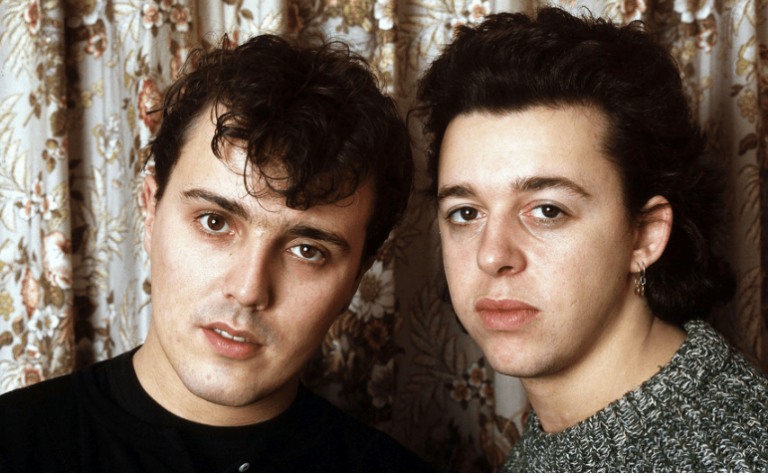
The influence of “Shout” extends beyond its initial success, resonating with audiences long after its release. The song’s powerful message of emotional expression and resistance continues to resonate in contemporary contexts, reflecting ongoing struggles and the universal need for personal and collective empowerment.
In summary, “Shout” by Tears for Fears is a quintessential 1980s anthem that captures the era’s spirit through its powerful lyrics and innovative sound. Its exploration of personal and social issues, combined with its memorable musical and visual presentation, ensures that it remains a significant and impactful piece of music history.
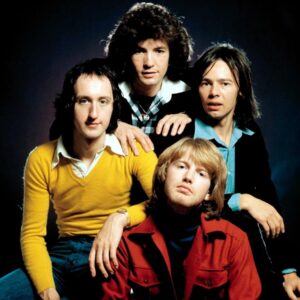
“Magic” – Pilot
“Magic” is a song by the Scottish pop band Pilot, released in 1974. It is one of their most popular and enduring hits. Here’s a closer look at the song:
Lyrics Summary: The song’s lyrics convey a sense of wonder and enchantment, describing the feeling of being in a magical, almost dreamlike state. It touches on themes of love and the extraordinary, using vivid imagery to evoke a sense of fantasy and delight. The chorus celebrates the “magic” of these feelings and experiences, emphasizing their special and uplifting nature.
Musical Style: “Magic” is characterized by its catchy melody and upbeat, pop-rock sound. The song features a blend of piano, guitars, and lush orchestration, creating a rich and melodic sound. The arrangement includes a memorable piano riff and a chorus that is both singable and infectious.
Impact and Legacy: The song was a commercial success, reaching No. 5 on the UK Singles Chart and No. 11 on the Billboard Hot 100 in the United States. “Magic” became one of Pilot’s signature tracks and is still widely recognized for its catchy tune and uplifting feel. It has been featured in various compilations and remains a favorite in retro playlists.
Music Video: The song’s visual representations include performances and television appearances from the 1970s, showcasing the band’s pop appeal and the song’s energetic vibe.

Overall, “Magic” is celebrated for its catchy melody, charming lyrics, and its role in establishing Pilot as a prominent pop band of the 1970s. Its enduring popularity is a testament to its feel-good, magical quality.

“Let’s Do It Again” – The Staple Singers
The Soulful Joy of The Staple Singers’ “Let’s Do It Again”
Released in 1975, The Staple Singers’ “Let’s Do It Again” is a vibrant and uplifting track that exemplifies the group’s unique blend of soul, gospel, and pop. Featured on their album of the same name, the song is celebrated for its infectious groove, heartfelt lyrics, and the powerful vocal performance that has become a signature of The Staple Singers’ sound.
“Let’s Do It Again” opens with a captivating and rhythmic introduction, driven by a groovy bass line and a steady beat that immediately sets an upbeat tone. The song’s arrangement incorporates elements of soul and funk, with prominent brass and string sections that add to its rich and engaging sound. This musical backdrop creates an atmosphere of celebration and joy, perfectly complementing the song’s lyrical message.
Lyrically, “Let’s Do It Again” is a call to rekindle and celebrate love. The chorus, with its inviting line “Let’s do it again,” conveys a sense of longing and enthusiasm for repeating joyful and romantic moments. The lyrics reflect the group’s ability to blend heartfelt sentiment with an upbeat and playful tone, capturing the essence of their gospel roots while appealing to a broader audience.
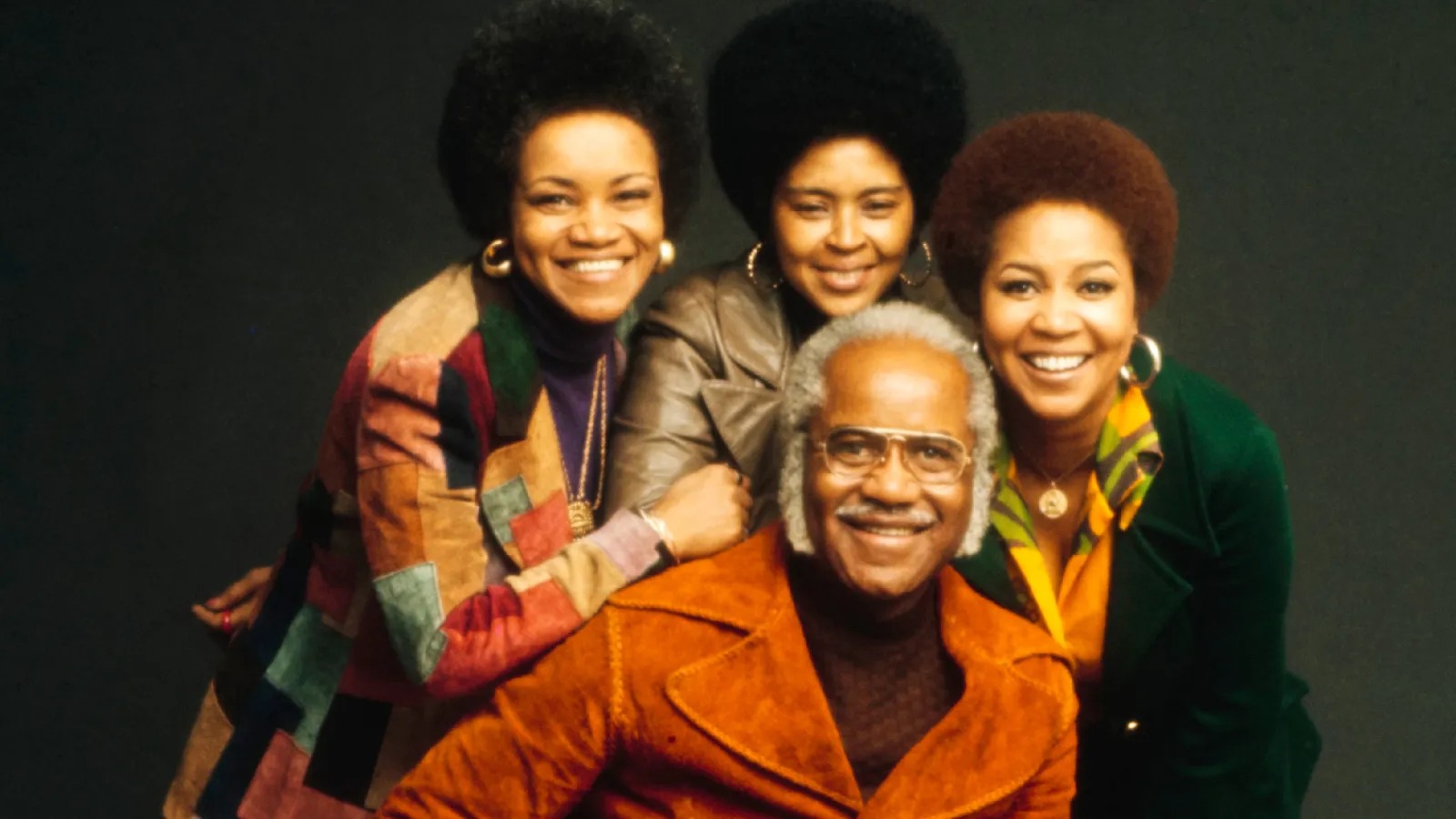
The Staple Singers’ vocal performance is a standout feature of “Let’s Do It Again.” Mavis Staples’ lead vocals are characterized by their warmth, depth, and emotional resonance, bringing a sense of sincerity and passion to the track. The harmonies provided by the other members of the group enhance the song’s richness and depth, creating a harmonious and uplifting sound that is both captivating and memorable.
The production of “Let’s Do It Again” reflects the polished and soulful sound of the mid-1970s. The track features a clean mix that highlights the song’s groove and the intricate arrangements of brass, strings, and rhythm sections. This production style enhances the song’s energetic and joyful character, contributing to its lasting appeal and success.
“Let’s Do It Again” achieved significant commercial success, reaching the top of the Billboard Hot 100 and becoming one of The Staple Singers’ most popular hits. Its success can be attributed to its catchy melody, upbeat lyrics, and the group’s compelling performance. The song’s ability to blend soul, funk, and pop elements while maintaining its heartfelt message underscores its importance in The Staple Singers’ discography.
In conclusion, The Staple Singers’ “Let’s Do It Again” is a timeless and joyful track that captures the essence of the group’s soulful and celebratory style. The song’s infectious groove, heartfelt lyrics, and powerful vocal performance make it a standout piece in their catalog. Its enduring popularity highlights its role as a significant and influential song in the landscape of 1970s soul and pop music.

“Blinding Lights” – The Weeknd
Released in November 2019, “Blinding Lights” by The Weeknd quickly became a defining track of the late 2010s, notable for its nostalgic nod to 1980s synthwave while delivering a contemporary pop experience. Written by The Weeknd (Abel Tesfaye), along with Max Martin and Oscar Holter, the song is celebrated for its infectious melody, vibrant production, and emotional depth.
The song opens with a pulsating synthesizer intro that immediately evokes a retro, yet timeless, ambiance. The Weeknd’s vocals enter with a smooth, emotive delivery that effortlessly combines vulnerability with an urgent yearning. The chorus, featuring the lines “I said, ooh, I’m blinded by the lights, no, I can’t sleep until I feel your touch,” encapsulates the song’s central theme of longing and desire, highlighting the emotional core of the track.
Lyrically, “Blinding Lights” explores themes of love and loneliness, reflecting a sense of disconnection and the yearning to reconnect with a significant other. The lyrics convey a powerful sense of nostalgia and urgency, expressing the feeling of being lost without the presence of a loved one. This theme resonates with listeners who have experienced similar feelings of longing and separation.
The production of “Blinding Lights” is characterized by its dynamic blend of synth-driven melodies, driving beats, and a retro-inspired sound that pays homage to the 1980s while remaining firmly grounded in contemporary pop music. The use of synthesizers and drum machines creates an infectious rhythm and an anthemic quality that enhances the song’s emotional impact. The production captures a sense of both nostalgia and modernity, contributing to the song’s broad appeal.

The music video for “Blinding Lights” features The Weeknd in a cinematic narrative that complements the song’s themes. The visual storytelling, combined with the song’s retro aesthetic, enhances the overall experience and reinforces the track’s connection to the era it pays tribute to.
“Blinding Lights” achieved remarkable commercial success, topping the Billboard Hot 100 and earning critical acclaim for its blend of nostalgic and modern elements. The song’s impact is reflected in its extensive airplay, numerous awards, and its influence on contemporary pop and synthwave music.
In summary, “Blinding Lights” by The Weeknd is a standout track that masterfully combines nostalgic synthwave influences with a modern pop sensibility. Its memorable melody, emotive lyrics, and dynamic production make it a defining song of the late 2010s, capturing the essence of longing and the timeless appeal of 1980s-inspired music.

“Come as You Are” – Nirvana
“Come as You Are” by Nirvana, released in 1991, is one of the standout tracks from their groundbreaking album Nevermind. The song is known for its memorable riff, introspective lyrics, and its role in defining the grunge movement of the early 1990s.
Essay on “Come as You Are” by Nirvana
“Come as You Are” by Nirvana: An Anthem of Authenticity and Rebellion
Released in 1991 as the second single from Nirvana’s Nevermind album, “Come as You Are” stands as one of the most iconic tracks of the grunge era. With its distinctive guitar riff, contemplative lyrics, and raw energy, the song captures the essence of Nirvana’s influence on rock music and its cultural impact.
The lyrics of “Come as You Are” are often interpreted as a call for authenticity and acceptance. The recurring line, “Come as you are, as you were, as I want you to be,” invites listeners to embrace their true selves without pretense. The song’s verses, with lines like “I don’t have a gun,” and “Memories, memories, memories,” evoke a sense of vulnerability and introspection, suggesting a desire to connect on a genuine level. The lyrics reflect a rebellious spirit, challenging societal norms and expectations by promoting individualism and self-acceptance.
Musically, “Come as You Are” is characterized by its memorable guitar riff, which is both simple and haunting. The riff, played by Kurt Cobain, features a distinctive, echoing effect that gives the song its unique sound. The track combines elements of punk rock and alternative music, with its grunge aesthetics evident in the raw, unpolished production. The song’s tempo is mid-paced, and its arrangement includes a dynamic shift between verses and chorus, creating a sense of emotional tension and release.

The music video for “Come as You Are,” directed by Kevin Kerslake, complements the song’s themes with its striking visuals. The video features the band performing in a dark, surreal setting with abstract imagery, including the iconic use of floating objects and symbolic elements. The visual style of the video enhances the song’s introspective and rebellious mood, capturing the essence of the grunge movement.
The impact of “Come as You Are” was significant, with the song becoming one of Nirvana’s most recognized hits. It contributed to the success of the Nevermind album and helped to solidify Nirvana’s place in the pantheon of influential rock bands. The song’s blend of introspective lyrics, innovative guitar work, and grunge aesthetics made it a defining track of the early 1990s and a cultural touchstone for the generation that embraced it.
In conclusion, “Come as You Are” by Nirvana is a powerful anthem of authenticity and rebellion. Through its memorable riff, introspective lyrics, and raw production, the song captures the spirit of the grunge movement and reflects Nirvana’s impact on rock music. Its enduring appeal underscores its significance in the genre and its continued resonance with listeners who appreciate its message of self-acceptance and individualism.
Video:
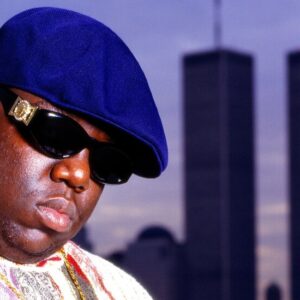
“Big Poppa” – The Notorious B.I.G.
“Big Poppa” by The Notorious B.I.G., released in 1994, is one of the defining tracks of the East Coast hip-hop scene. Featured on his debut album Ready to Die, the song is known for its smooth production, charismatic delivery, and confident lyrics. As one of Biggie’s signature hits, “Big Poppa” helped solidify his reputation as a leading figure in hip-hop and remains a classic in the genre.
Essay on “Big Poppa” by The Notorious B.I.G.
“Big Poppa” by The Notorious B.I.G.: A Landmark in East Coast Hip-Hop
Released in 1994, “Big Poppa” by The Notorious B.I.G. stands as a seminal track in the history of hip-hop, embodying the essence of the East Coast rap scene during the 1990s. Featured on his groundbreaking debut album Ready to Die, the song is celebrated for its smooth production, charismatic delivery, and the larger-than-life persona of Biggie Smalls. “Big Poppa” not only exemplifies Biggie’s distinctive style but also showcases his ability to blend confidence with charisma.
The lyrics of “Big Poppa” are a showcase of The Notorious B.I.G.’s commanding presence and braggadocious style. The chorus, “I love it when you call me Big Poppa / Throw your hands in the air, if you’s a true player,” captures Biggie’s self-assured demeanor and his appeal as a figure of admiration and respect in the hip-hop community. The verses highlight Biggie’s storytelling prowess and his ability to craft vivid, larger-than-life narratives about his lifestyle, success, and influence. The lyrics are both playful and assertive, reflecting Biggie’s larger-than-life persona and his impact on the genre.
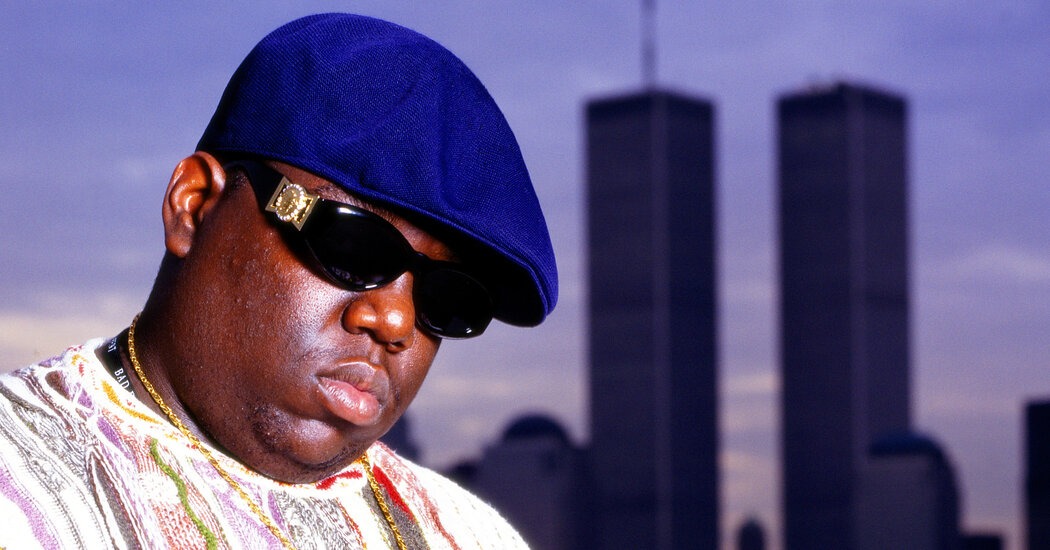
Musically, “Big Poppa” is characterized by its smooth, laid-back production, which is a hallmark of the song. Produced by Puff Daddy and Stevie J, the track features a memorable sample from the Isley Brothers’ “Between the Sheets,” giving it a classic and sophisticated vibe. The beat is marked by its mellow groove, laid-back rhythm, and lush instrumentation, creating a luxurious and inviting atmosphere. Biggie’s delivery is smooth and confident, perfectly complementing the track’s production and enhancing its overall appeal.
The music video for “Big Poppa,” directed by Hype Williams, visually represents the song’s themes of opulence and success. The video features scenes of lavish parties, stylish fashion, and extravagant settings, aligning with the song’s portrayal of Biggie as a charismatic and influential figure. The visual presentation enhances the song’s impact, reinforcing its message of confidence and affluence.
The success of “Big Poppa” was significant, with the song becoming one of The Notorious B.I.G.’s most iconic hits and a defining track of the 1990s hip-hop era. Its success is a testament to Biggie’s ability to craft memorable and influential music, as well as the track’s ability to capture the essence of East Coast rap. The song’s impact is evident in its continued popularity and its status as a classic in hip-hop history.
In conclusion, “Big Poppa” by The Notorious B.I.G. is a landmark track in East Coast hip-hop, known for its smooth production, confident lyrics, and Biggie’s larger-than-life persona. Through its memorable chorus, sophisticated musical arrangement, and charismatic delivery, the song captures the essence of 1990s hip-hop and solidifies Biggie’s place as a central figure in the genre. Its enduring appeal and influence highlight the song’s significance and its role in shaping the landscape of hip-hop.
Video:

“It Must Have Been Love” – Roxette
Roxette’s song “It Must Have Been Love,” released in 1987, stands out as a timeless classic in the world of pop music. The Swedish duo, consisting of Marie Fredriksson and Per Gessle, delivered an emotional ballad that resonates with many listeners due to its poignant lyrics and beautiful melody.
The song is best known for its association with the film Pretty Woman, starring Julia Roberts and Richard Gere. This connection to the iconic movie further cemented the song’s place in popular culture. Its lyrical content explores the theme of lost love, reflecting on a relationship that was once significant but ultimately did not endure. The refrain, “It must have been love, but it’s over now,” encapsulates a deep sense of nostalgia and regret, capturing the universal experience of reflecting on past relationships.
Musically, “It Must Have Been Love” features a rich, orchestral arrangement that enhances its emotional depth. The gentle piano melody and string accompaniment provide a lush backdrop to Fredriksson’s soulful vocals. The combination of these elements creates a powerful listening experience that has appealed to audiences for decades.
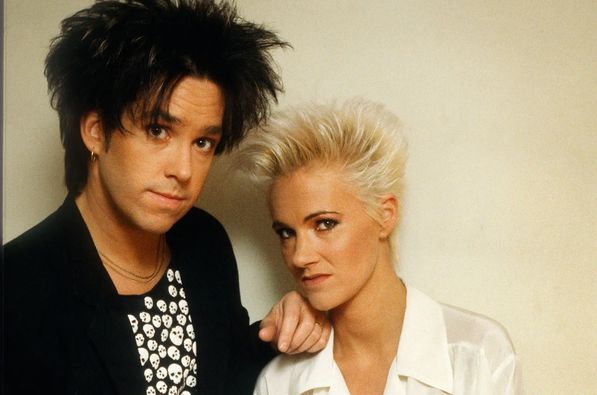
The song’s success was not just limited to its chart performance; it also left a lasting impact on listeners, many of whom connect with its themes of love and loss on a personal level. Roxette’s ability to convey such profound emotions through their music is a testament to their skill as artists.
In conclusion, “It Must Have Been Love” by Roxette is more than just a hit song; it is a reflection of the enduring nature of love and the emotional complexities associated with it. Its lasting appeal is a testament to Roxette’s musical talent and the universal themes that resonate with people across the globe.
Video:

“It Takes Two” – Rob Base & DJ E-Z Rock
“It Takes Two” by Rob Base & DJ E-Z Rock: A Pioneering Hip-Hop Classic
Released in 1988, “It Takes Two” is a seminal track by hip-hop artist Rob Base and DJ E-Z Rock. The song is widely regarded as a classic in the genre, celebrated for its infectious beat, catchy hooks, and energetic delivery.
Musical Composition: “It Takes Two” features a distinctive and catchy beat, characterized by its prominent use of samples and a driving rhythm. The track prominently samples “Think (About It)” by Lyn Collins, which provides the song’s recognizable hook and energetic feel. The beat is complemented by DJ E-Z Rock’s skilled scratching and Rob Base’s enthusiastic vocal delivery. The song’s arrangement includes a mix of hip-hop beats, funky rhythms, and memorable call-and-response elements that enhance its danceability.
Lyrical Content: The lyrics of “It Takes Two” celebrate the power of teamwork and the fun of dancing. The chorus—“It takes two to make a thing go right / It takes two to make it outta sight”—emphasizes the idea that collaboration and togetherness can lead to success and enjoyment. The verses feature Rob Base’s dynamic rapping, with playful and energetic lines that encourage listeners to get up and dance. The lyrics capture the essence of early hip-hop culture, focusing on enjoyment and the communal experience of music.

Cultural Impact: “It Takes Two” was a commercial success, reaching the top 40 on the Billboard Hot 100 and becoming a staple of late 80s hip-hop. The song’s infectious beat and memorable hooks made it a favorite on dance floors and radio stations alike. Its success helped establish Rob Base & DJ E-Z Rock as influential figures in hip-hop, and the track has since been recognized as a classic of the genre.
Legacy: The song remains a significant and influential track in the history of hip-hop. Its impact is evident in its continued popularity and frequent inclusion in playlists and compilations of classic hip-hop and dance music. “It Takes Two” is often cited as one of the defining tracks of late 80s hip-hop, showcasing the genre’s early energy and creativity.
Summary: “It Takes Two” by Rob Base & DJ E-Z Rock, released in 1988, is a classic hip-hop track known for its catchy beat and memorable hooks. The song features a prominent sample from Lyn Collins and showcases energetic vocals and skilled scratching. Its celebration of teamwork and dance, along with its commercial success, highlights its importance as a pioneering hit in the hip-hop genre.
Video:

“𝙄 𝙒𝙞𝙡𝙡 𝙁𝙤𝙡𝙡𝙤𝙬 𝙃𝙞𝙢” – 𝙇𝙞𝙩𝙩𝙡𝙚 𝙋𝙚𝙜𝙜𝙮 𝙈𝙖𝙧𝙘𝙝dx
“I Will Follow Him” is a classic song performed by Little Peggy March, released in 1963. Here’s a detailed look at this enduring track:
Overview
- Artist: Little Peggy March
- Single Release: March 1963
- Album: Little Peggy March (1963)
- Genre: Pop
- Length: 2:32
“I Will Follow Him” features a straightforward pop melody with an upbeat tempo and an infectious chorus. The song is driven by a strong, rhythmic piano line and orchestration that includes strings and a prominent drumbeat. Little Peggy March’s vocal performance is youthful and impassioned, capturing the song’s emotional commitment and devotion.
The lyrics of “I Will Follow Him” express a deep, unwavering devotion to a loved one. With lines such as “I will follow him, follow him wherever he may go,” the song conveys a sense of commitment and loyalty. The theme centers around the idea of following someone you love regardless of the circumstances or challenges.

The song was a significant hit for Little Peggy March, reaching No. 1 on the Billboard Hot 100 chart in the U.S. It also achieved international success, topping charts in several countries, including the UK and France. The song’s popularity helped establish Little Peggy March as a prominent figure in the pop music scene of the early 1960s.
Little Peggy March was only 15 years old when “I Will Follow Him” was released, making her one of the youngest artists to achieve a No. 1 hit on the Billboard Hot 100. The song was written by Françoise Dorin, Jacques Plante, and Paul Mauriat, and it was originally recorded as “Chariot” by French singer Paul Mauriat.
“I Will Follow Him” remains a classic pop song and is often remembered for its catchy melody and heartfelt lyrics. It has been covered by various artists over the years and continues to be a beloved track from the early 1960s. The song’s enduring appeal is a testament to Little Peggy March’s talent and the song’s universal theme of devoted love.
Video:

𝘾𝙤𝙢𝙚 𝙏𝙤𝙜𝙚𝙩𝙝𝙚𝙧” – 𝙏𝙝𝙚 𝘽𝙚𝙖𝙩𝙡𝙚𝙨
“Come Together” is a classic song by The Beatles, released on their 1969 album Abbey Road. Here’s a closer look at this iconic track:
Overview
- Artist: The Beatles
- Album: Abbey Road (1969)
- Genre: Rock, Blues, Psychedelia
- Length: 4:20
“Come Together” is known for its distinctive, laid-back groove and minimalist arrangement. The song features John Lennon’s deep, drawling vocals, a steady drum beat by Ringo Starr, and a memorable bass line. The track also includes a bluesy, almost hypnotic piano riff, and its overall sound blends rock with elements of blues and psychedelia.
The lyrics of “Come Together” are famously cryptic and have been the subject of much interpretation. They feature a series of abstract and surreal images, which Lennon himself described as a collage of phrases and ideas. The song’s chorus, “Come together, right now, over me,” conveys a sense of unity and connection, although the verses are more enigmatic and open to interpretation.

“Come Together” is one of The Beatles’ most famous and influential songs. It has been widely covered and referenced in popular culture, and its unique sound and lyrical mystery have made it a favorite among fans and critics alike. The track showcases John Lennon’s ability to craft evocative and memorable lyrics, while also highlighting the band’s innovative approach to music.
The song’s famous opening line, “Here come old flat-top,” was reportedly inspired by Chuck Berry’s song “You Can’t Catch Me.” Lennon later settled a legal dispute with Berry’s publisher over the similarities between the two songs.
Music Video
Although there is no official music video for “Come Together,” the song has been featured in numerous documentaries and live performances, capturing the band’s iconic status and the song’s enduring appeal.
Video:
